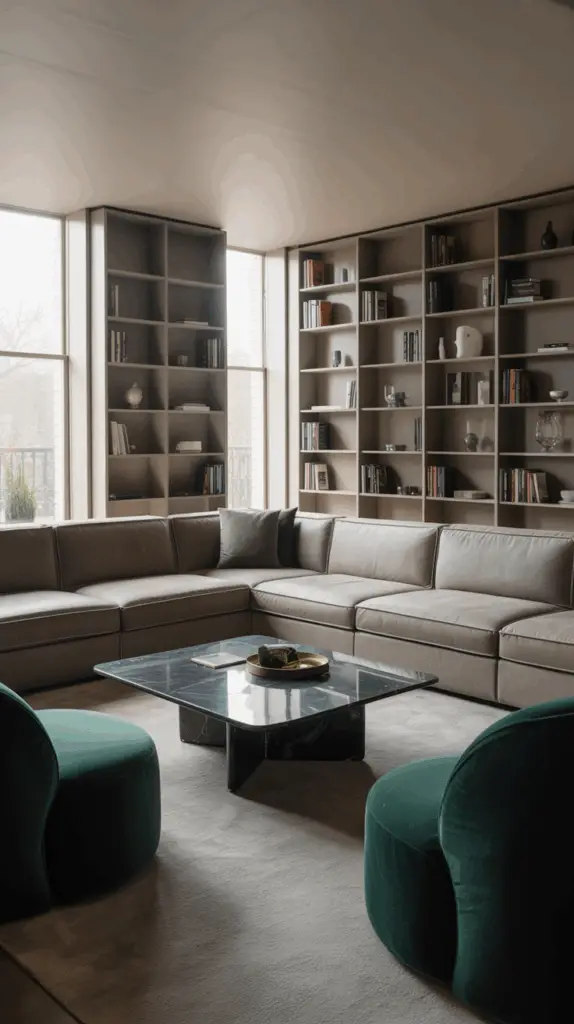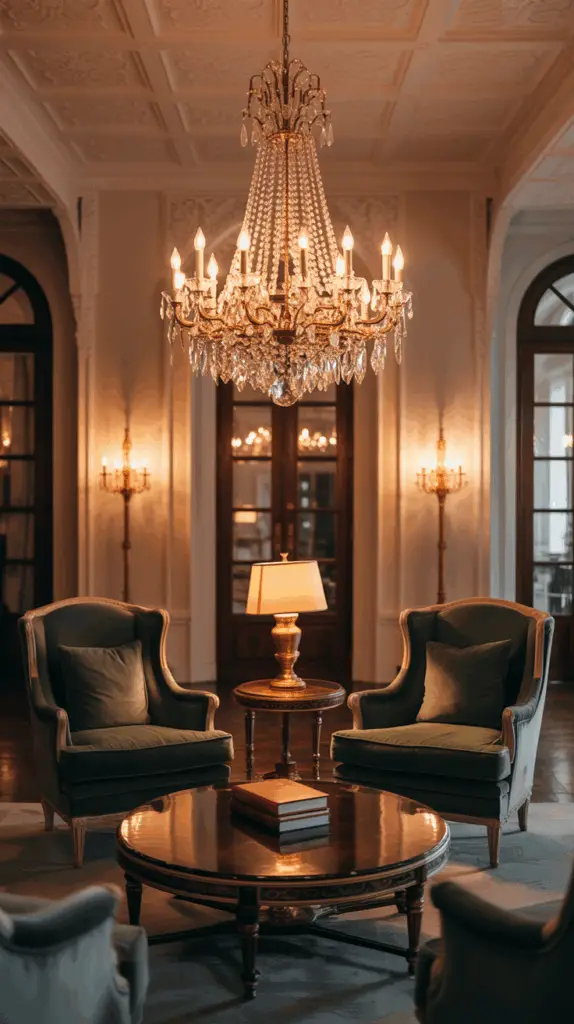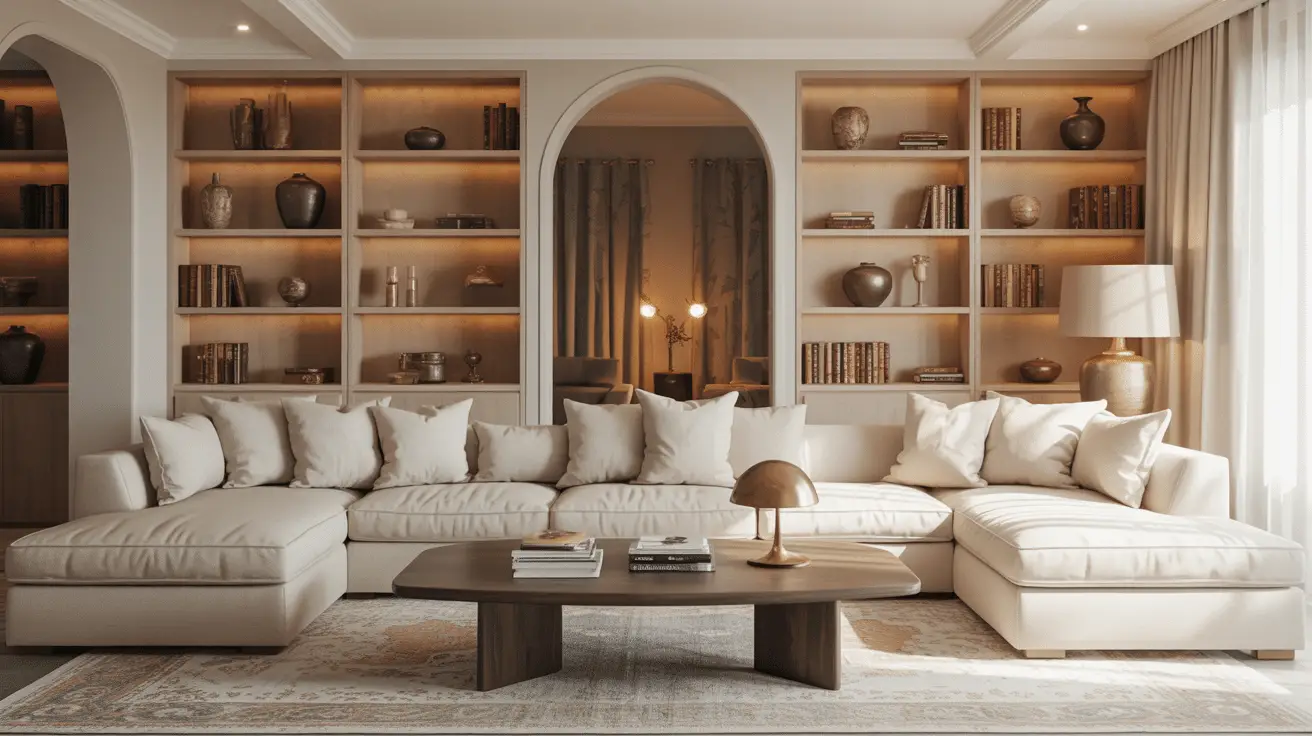Transform Your Space: Stunning Large Living Room Ideas to Elevate Your Home
Table of Contents
Introduction
Imagine walking into a home where the living room feels like a sanctuary—spacious, styled, and designed for both relaxation and gathering. Large living rooms offer endless possibilities for aesthetic freedom and functional elegance, yet many homeowners struggle to strike the right balance between comfort and grandeur.
Whether your living room feels empty and underwhelming or overcrowded and chaotic, optimizing a large space is a rewarding challenge. According to interior design studies, a well-designed living space can significantly boost a home’s overall value and the homeowner’s mental well-being. So if you’ve been wondering how to maximize that generous square footage while keeping things cohesive and stylish—you’re in the right place.
In this article, we’ll explore a curated collection of stunning large living room ideas that blend style with practicality. From layout configurations to lighting design, furniture arrangements, and color palettes, you’ll find expert guidance to transform your space into a sophisticated retreat. Whether you’re updating your existing room or designing from scratch, these ideas will help you make the most of every square foot.
Create Purposeful Zones Without Compromising Flow
Large living rooms can easily feel like vast, undefined spaces. To avoid that “empty lobby” feeling, divide the room into purposeful zones while maintaining visual flow. Think of your living room as a collection of experiences: lounging, entertaining, reading, and possibly even working.
Start by anchoring each zone with a defining element—such as an area rug, console table, or lighting fixture. This creates structure without requiring walls. A cozy seating area might feature a sectional and ottoman on a soft rug, while a reading nook might include a vintage armchair, floor lamp, and bookshelf.
Equally important is the flow between zones. Open pathways and clear sightlines help ensure the room feels unified and navigable. Keep walkways at least 36 inches wide to maintain accessibility.
| Zone Type | Defining Elements | Best Placement Tip |
| Lounge | Sectional, coffee table, area rug | Centered around a focal point |
| Reading Nook | Armchair, lamp, side table | Near natural light or in a corner |
| Entertainment | TV unit, sound system, media console | Along the longest wall for visibility |
| Workspace | Desk, chair, task lighting | Tucked against a quiet wall or corner |
Use Statement Furniture to Anchor the Room
In large living rooms, standard-sized furniture often feels dwarfed and unimpactful. The key to filling a vast space without overcrowding it is to invest in statement furniture that anchors the design.
Oversized sectionals, dramatic coffee tables, and tall bookshelves provide visual weight and functionality. Think of a plush U-shaped sofa paired with a sculptural marble table, or a wingback chair with bold fabric next to a tall plant. These elements not only provide comfort and purpose but also establish focal points in the room.
Use symmetrical placement to create balance—especially if your room features architectural focal points like a fireplace or large windows. And don’t shy away from layering textures, like pairing leather with linen or velvet with wood.
| Furniture Piece | Ideal Size for Large Rooms | Styling Tip |
| Sectional Sofa | 110”+ length | Choose neutral fabric for versatility |
| Coffee Table | 40”+ diameter or wide | Go sculptural for added drama |
| Bookshelves | Tall or wall-mounted | Style with books, art, and greenery |
| Accent Chairs | Bold shapes or prints | Pair in twos for symmetry |

Play With Proportion Through Layered Lighting
Lighting can make or break the ambiance of a large living room. While smaller rooms often rely on a single overhead fixture, spacious rooms benefit from a layered lighting approach—balancing ambient, task, and accent lighting.
Start with a large chandelier or pendant light as a central statement. Complement this with floor lamps next to seating areas, wall sconces to highlight art, and table lamps for reading nooks or side tables. Lighting should not only illuminate but also enhance the room’s architecture and furniture.
Dimmers are your best friend—they allow you to control the mood throughout the day. And in expansive rooms, don’t hesitate to mix finishes and materials, such as brushed brass with matte black, to create depth and interest.
| Lighting Layer | Purpose | Example Fixture |
| Ambient | General illumination | Chandelier, recessed ceiling lights |
| Task | Focused lighting | Floor lamp, desk lamp |
| Accent | Decorative/highlight features | Wall sconces, LED strip behind shelves |

Balance Scale with Large-Format Decor and Art
In a large living room, tiny decor elements can get lost. Instead, opt for large-format artwork, oversized mirrors, tall plants, and substantial decorative pieces that hold their own within the space.
For example, a massive canvas above the sofa adds drama and color, while an arched mirror reflects light and makes the room feel even more expansive. Tall indoor trees like fiddle-leaf figs or olive trees bring a vertical dimension, drawing the eye upward and balancing horizontal sprawl.
When accessorizing shelves or consoles, group items in odd numbers and vary heights for visual interest. Less is more—choose a few impactful pieces instead of cluttering every surface.
| Decor Element | Ideal Size or Height | Placement Idea |
| Wall Art | 36”+ per side | Above sofa or fireplace |
| Mirror | 48”+ height | Opposite window to reflect natural light |
| Indoor Plants | 5–7 ft tall | Corners or beside furniture |
| Vases/Sculptures | 12”+ height | Center of table or shelf grouping |
Elevate With Color, Texture, and Contrast
A cohesive color palette helps tie a large living room together. But don’t confuse “cohesive” with “monotonous.” Large spaces offer the opportunity to use bold contrast and layered textures for richness and dimension.
Start with a base of neutral tones—soft whites, taupes, or greiges. Then bring in color through throw pillows, artwork, rugs, and accent chairs. Jewel tones like emerald, navy, or burnt orange add luxury without overwhelming. You can also use textures like boucle, velvet, rattan, and wood to create tactile variation.
Use contrast to your advantage. Dark window frames, black light fixtures, or a moody feature wall can ground the space and prevent it from feeling too airy.
| Element | Texture/Color Use | Why It Works |
| Sofa Fabric | Velvet or linen in a neutral | Adds elegance and comfort |
| Accent Wall | Deep green or navy | Adds depth and focus |
| Throw Pillows | Mixed textiles | Layers of comfort and interest |
| Rug | Patterned or textured | Grounds the seating zone |
Design Around a Stunning Fireplace or Focal Point
If your large living room includes a fireplace, bay window, or media unit, use it as the foundation for your layout. Focal points help provide natural symmetry and flow, making the room feel intentional rather than random.
Start by aligning main seating around this element—whether it’s a sectional framing a fireplace or twin sofas flanking a media unit. Use visual weight like a gallery wall, built-in cabinetry, or stone cladding to make the focal point pop.
Even if your room lacks a traditional focal feature, you can create one using a console table with an oversized mirror, or a dramatic lighting fixture. Focal points draw the eye and provide structure to the room’s narrative.
| Focal Point Type | Enhancing Elements | Best Layout Tip |
| Fireplace | Mantel styling, seating wrap | Use symmetry on both sides |
| Picture Window | Curtains, seating nearby | Keep window view unobstructed |
| TV Wall | Media console, floating shelves | Mount TV and balance with art or lighting |
| Feature Wall | Paint, paneling, built-ins | Position large furniture facing it |
Incorporate Built-In Storage for Beauty and Function
Large living rooms often double as high-traffic family spaces. Built-in storage helps maintain a clutter-free environment while enhancing the room’s style.
Consider built-in bookcases that frame the fireplace or wall-to-wall storage beneath a media console. Storage ottomans, window seats with drawers, and cabinets disguised as sideboards all help hide everyday items without sacrificing beauty.
Opt for custom or semi-custom designs that match your wall color or wood tones to create seamless integration. Use open shelving for display and closed cabinetry for hidden storage—striking a balance between form and function.
| Storage Type | Use | Best Placement Tip |
| Built-In Bookcase | Books, decor, framed art | Flank fireplace or TV wall |
| Storage Bench | Toys, blankets, shoes | Under windows or entry to living room |
| Sideboard | Tech accessories, tableware | Behind sofa or against main wall |
| Floating Shelves | Display & vertical interest | Over media console or accent walls |
Conclusion
Designing a large living room is both a privilege and a puzzle. When thoughtfully planned, these generous spaces can become the most impressive and inviting areas in your home. By defining zones, choosing impactful furniture, layering lighting, playing with scale and proportion, and integrating storage solutions, you can create a space that feels balanced, beautiful, and uniquely yours.
Each decision—from the size of your artwork to the placement of your accent chairs—should serve the room’s function and aesthetic. Don’t be afraid to take bold steps; with ample space comes the freedom to make your design dreams a reality. Let your large living room be a celebration of style, comfort, and spatial elegance.

